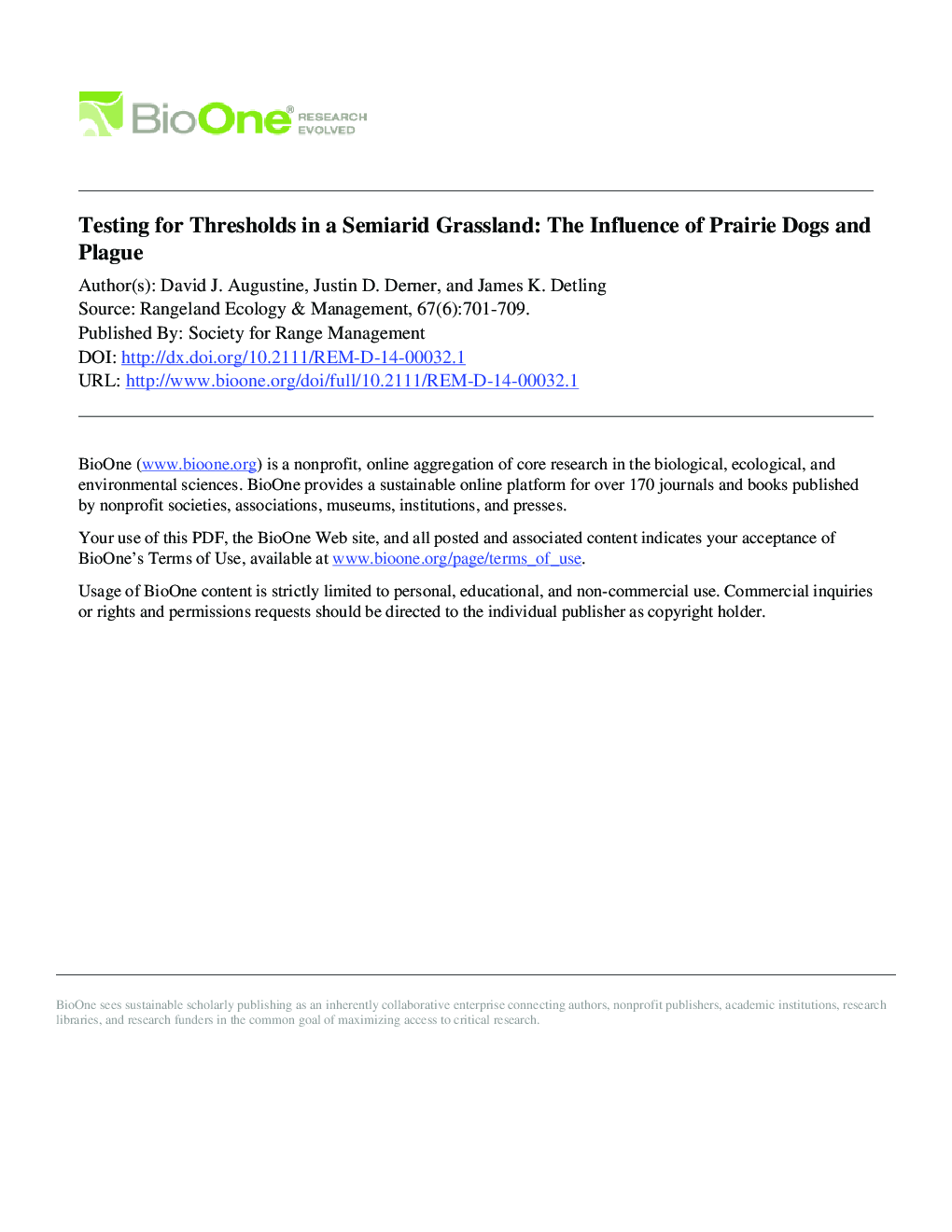| کد مقاله | کد نشریه | سال انتشار | مقاله انگلیسی | نسخه تمام متن |
|---|---|---|---|---|
| 4404376 | 1307159 | 2014 | 10 صفحه PDF | دانلود رایگان |
عنوان انگلیسی مقاله ISI
Testing for Thresholds in a Semiarid Grassland: The Influence of Prairie Dogs and Plague
دانلود مقاله + سفارش ترجمه
دانلود مقاله ISI انگلیسی
رایگان برای ایرانیان
کلمات کلیدی
موضوعات مرتبط
علوم زیستی و بیوفناوری
علوم کشاورزی و بیولوژیک
علوم کشاورزی و بیولوژیک (عمومی)
پیش نمایش صفحه اول مقاله

چکیده انگلیسی
State-and-transition models for semiarid grasslands in the North American Great Plains suggest that the presence of herbivorous black-tailed prairie dogs (Cynomys ludovicianus) on a site 1) creates a vegetation state characterized by increased dominance of annual forbs and unpalatable bunchgrasses and increased bare soil exposure and 2) requires long-term (>â40 yr) prairie dog removal to transition back to a vegetation state dominated by palatable perennial grasses. Here, we examine 1) how the recent history of prairie dog occupancy on a site (1-10 yr) influences the magnitude of prairie dog effects on vegetation composition and 2) how occupancy history affects vegetation dynamics following extirpation of prairie dogs. We used a natural experiment in the shortgrass steppe of northeastern Colorado, USA, where prairie dogs were extirpated from multiple sites during an outbreak of epizootic plague. On sites occupied by prairie dogs for 1-4 yr prior to extirpation, plant cover and composition recovered to conditions similar to unoccupied sites within a single growing season. Larger reductions in perennial C4 grasses occurred on sites occupied for the prior 7-10 yr compared to sites with shorter occupancy histories (<â6 yr). On sites occupied for the prior 7-10 yr, C4 perennial grasses recovered after 5 yr following prairie dog extirpation; in addition, C3 perennial graminoids and forbs remained more abundant (compared to sites with no history of prairie dogs) throughout the 5-yr period. Our findings showcase that prior site occupancy (up to 10 yr) by prairie dogs did not induce irreversible shifts in vegetation state in this semiarid grassland. Rather, vegetation changes induced by prairie dogs represent primarily a phase shift in landscapes where prairie dog populations are regulated by epizootic plague.
ناشر
Database: Elsevier - ScienceDirect (ساینس دایرکت)
Journal: Rangeland Ecology & Management - Volume 67, Issue 6, November 2014, Pages 701-709
Journal: Rangeland Ecology & Management - Volume 67, Issue 6, November 2014, Pages 701-709
نویسندگان
David J. Augustine, Justin D. Derner, James K. Detling,